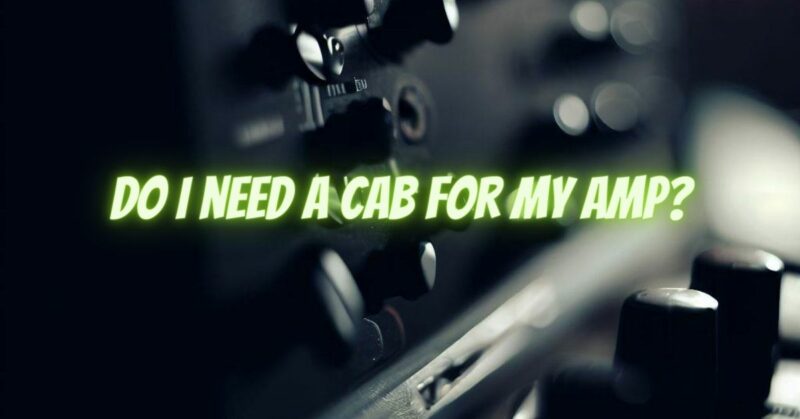When it comes to guitar amplification, there’s often a question that arises: “Do I need a cabinet for my amp?” While many guitarists are familiar with the classic image of a head and cabinet stack, the answer isn’t always straightforward. In this article, we’ll delve into the role of speaker cabinets in guitar amplification, discussing scenarios where they are essential and situations where alternatives may be considered.
- The Function of a Speaker Cabinet
A speaker cabinet serves as the housing for one or more speakers that convert the electrical signal from your amplifier into audible sound waves. It plays a fundamental role in projecting your guitar’s sound to the audience.
- Combo Amps vs. Amp Heads
Combo amplifiers integrate both the amplifier head and the speaker(s) in a single unit. Amp heads, on the other hand, are designed to be used in conjunction with an external speaker cabinet. The choice between the two depends on your specific needs and preferences.
- Scenarios Requiring a Speaker Cabinet
a. Amp Heads: If you have an amp head, a speaker cabinet is essential. The amp head alone does not have built-in speakers, so you need a cabinet to produce sound.
b. Live Performances: In live performance scenarios, a speaker cabinet is crucial for projecting your sound to the audience. It provides the necessary volume and dispersion, making it an indispensable component for gigs and concerts.
c. Recording Studios: In studio recording, speaker cabinets are typically used to mic up and capture the sound of the amplifier. The unique tonal characteristics of different cabinets can be essential for achieving specific recording tones.
d. Sound Reinforcement: When playing through a PA system or using an amplifier as a monitor, a speaker cabinet is still necessary to convert the amp’s signal into sound waves that can be amplified and heard.
- Scenarios Where Cabinets May Not Be Needed
a. Practice and Home Use: For quiet practice and home use, you can connect your amp head to a load box or speaker simulator instead of a traditional speaker cabinet. This allows you to play silently through headphones or send a direct signal to a recording interface.
b. Digital Modeling and Profiling: Some guitarists use digital modeling and profiling systems that simulate amplifier and cabinet tones. In these setups, physical speaker cabinets may not be required, as the sound is generated digitally and can be sent directly to a PA system or recording interface.
c. DI Solutions: Some modern amplifiers come equipped with Direct Injection (DI) or line out options that allow you to bypass a speaker cabinet and send a direct signal to a mixing console or recording device.
Whether or not you need a speaker cabinet for your amp depends on your specific circumstances and requirements. If you have an amp head, plan to perform live, or want to capture the sound of your amplifier in a recording studio, a speaker cabinet is essential. However, for quiet practice, home use, or when using advanced modeling and profiling technology, alternatives like load boxes, speaker simulators, or DI solutions can provide flexibility and convenience. Ultimately, the decision to use a cabinet or explore alternative options should align with your musical goals, playing environment, and equipment setup.


